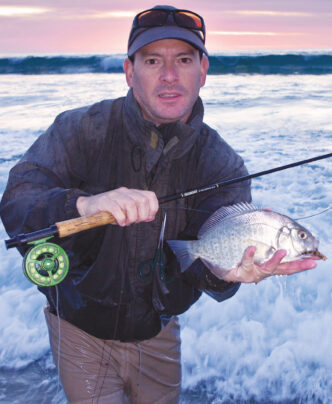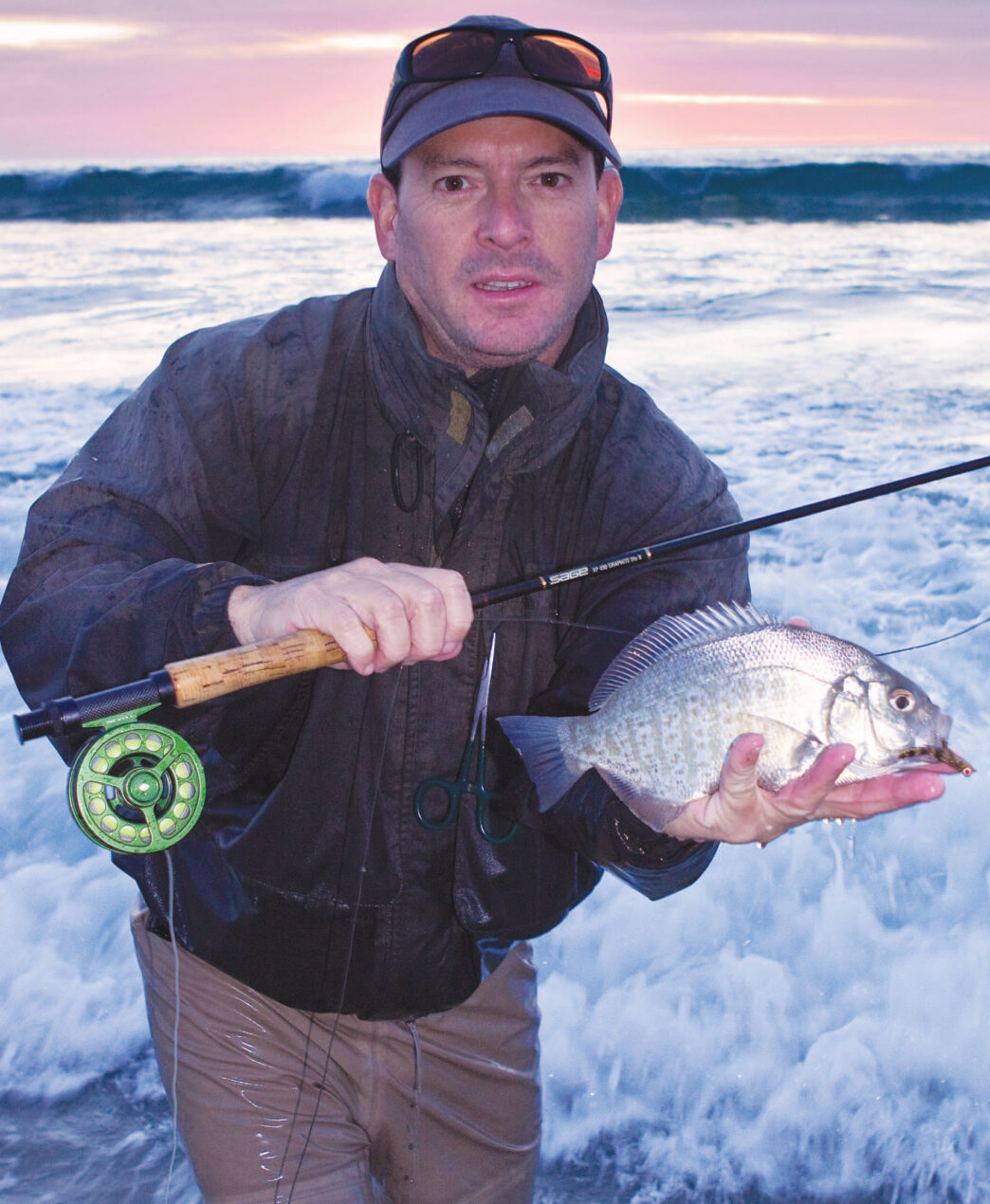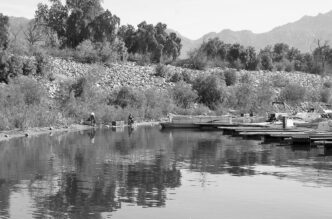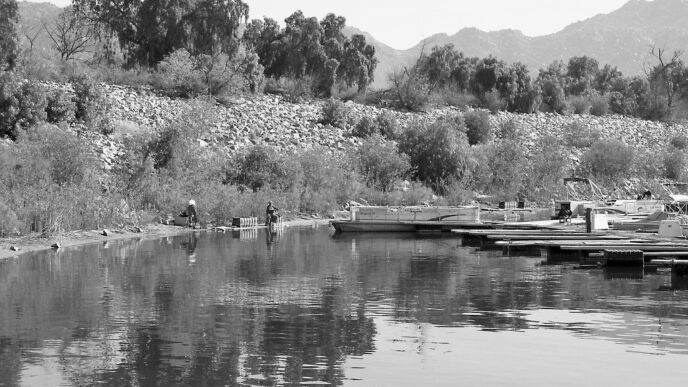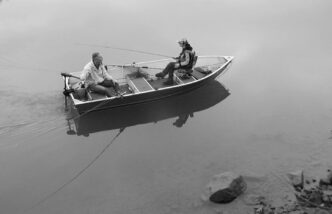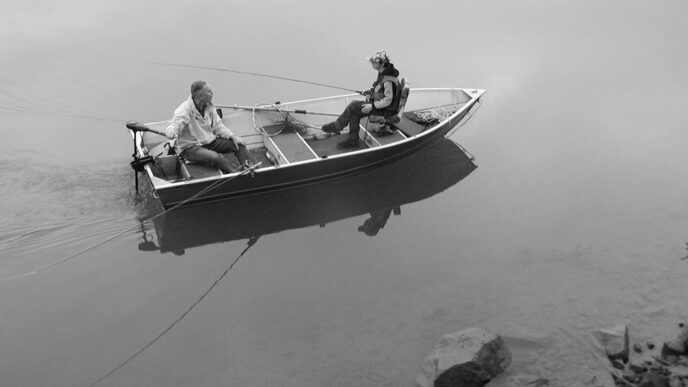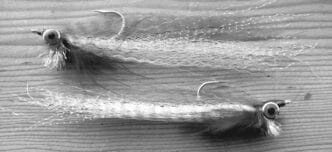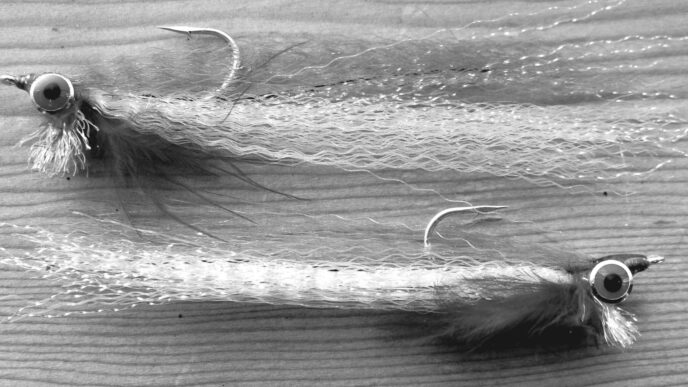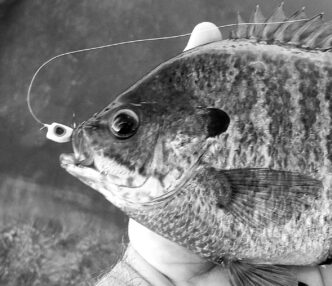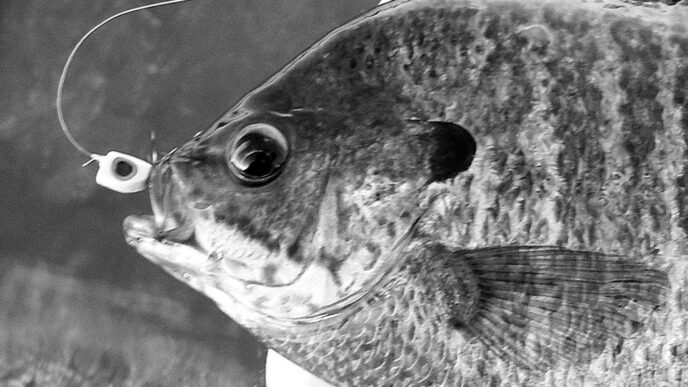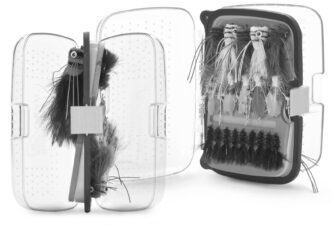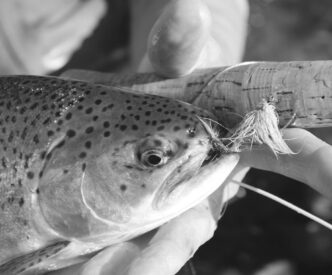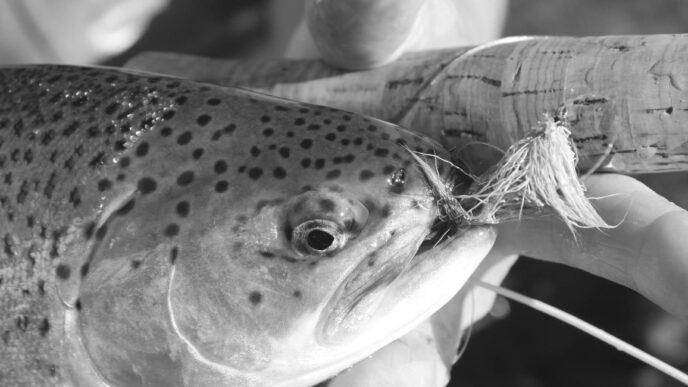My friend Scott Donaghe and I stood on the boardwalk in Pacific Beach, looking toward the water. It was a cool, spring morning in San Diego. I took a sip of my hot coffee — the warm cup felt good in my chilled hands. “What do you think, bud?” I asked him. “Let’s hit it. Let’s stick some monster perch!’’ he anxiously replied. We could hear the waves crashing on the beach, but we couldn’t quite see them. It was 5:30 in the morning — the time of day when it’s not dark, but not yet light, either. Most anglers refer to this time of day as “gray light.”
We grabbed our fly rods, and with coffee still in hand, headed toward the water. The gray light made it difficult for us to read the surf, but the closer we got, the better we could see the likely spots. “There’s a nice hole,” Scott said, pointing his rod tip toward the water. I quickly pulled 10 or 12 strips of line off my reel and laid out a cast as I waded into the water up to my knees. After stripping the line back two or three times, I was hooked up to a strong surfperch. The fish raced for deeper water, and for a moment, I thought he was heading for the Coronado Islands. As I continued to battle this hefty fish, I glanced in Scott’s direction, and he was fighting what appeared to be another big perch. After several minutes, we both were able to slide the barred surfperch onto the dry beach. Each fish exceeded the 16-inch mark on my fly rod, and after taking a few photos, we released them back into the foamy water.
Fishing off the beach in San Diego is good year-round, but springtime brings the fastest action. Big, healthy, aggressive barred surfperch roam in large quantities off San Diego beaches from late winter throughout the spring. Early mornings and late afternoons — low-light conditions — produce the biggest fish. Channels, cuts, holes, and troughs created by the winter storms are home to these bad boys. Catching one dozen to two dozen fish in a morning or evening session of fishing is the norm here during the spring, and the fish will average 8 to 10 inches. Perch over 15 inches are possible and considered real trophies.
While surfperch are the main target during the spring, they’re certainly not the only ones. Halibut, yellowfin croakers, spotfin croakers, corbinas, and mackerel are commonly hooked, as well. One of the beauties of fishing the beach is that every day is different.
Surfperch Tackle
A 9-foot 5-weight rod is my weapon of choice, armed with a fast-sinking shooting head of 200 to 250 grains or a full sinking line. Some kind of sinking fly line is a must to get your fly through the tumultuous water column and down near the bottom, where the fish feed. Reels should be anodized and easy to take apart and clean. You will get sand in your reel, but don’t worry — just make sure you thoroughly wash all of your gear with fresh water at the end of the day. As for leaders, keep them simple and short — 5 or 6 feet, tapered down to 4X. Add approximately 15 inches of 4X fluorocarbon tippet to your leader.
Most fish in the surf zone are highly opportunistic feeders. With all of the turbulence and complex currents, the fish have little time to scrutinize food and flies. Bonefish-style flies are always effective — they are the proper size and generally resemble the critters that live in the sand. Size 4 and 6 Foxy Crabs, Foxy Clousers, Beck’s Sili Legs, and Clouser Darters rank among my favorite surf patterns.
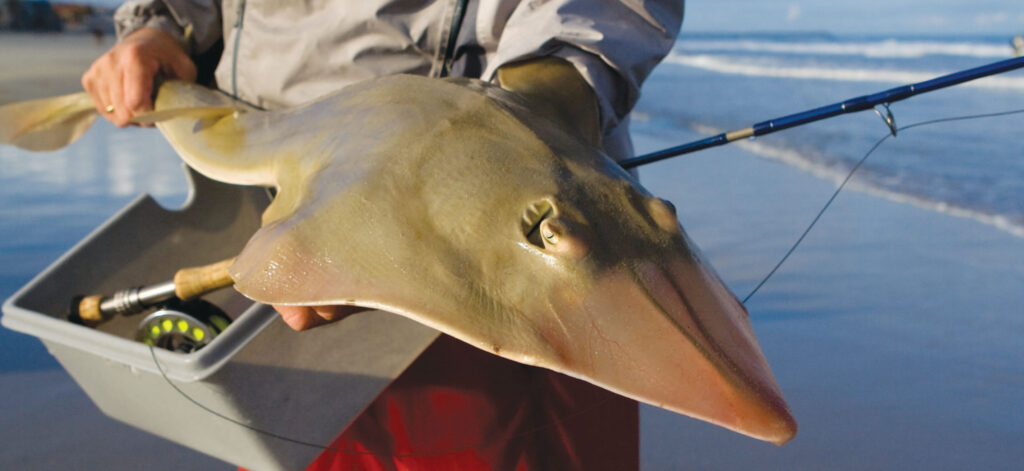
Staying dry and warm is essential, especially during the cooler months from the fall through the spring. Breathable waders work great, and the amount and type of layered clothing under your waders depends on the weather. Flats-type boots or wading boots without felt soles are perfect for walking and wading the sandy beaches. Leave the felt-soled boots at home: Sand and grit get in between the sole and the felt, causing them to separate.
Regardless of the weather, a rain jacket is critical. The constant battering of salt spray from breaking waves is normal for the surf angler. A breathable waterproof jacket will keep you dry and comfortable.
Other important gear includes a pair of sunglasses for cutting glare and protecting eyes from wind-blown casts. A stripping basket helps manage fly lines, and a chest pack holds fly boxes, leaders, tippet material, a hook sharpener, and your license. (Make sure you have a saltwater stamp on your license before you go.)
Surfperch Tactics
Most of the beaches in San Diego are gently sloping, easy to wade, and hold fish. As in trout fishing, reading the water is key. Like a trout stream, the beach contains cuts, holes, pockets, and seams, all of which can harbor hungry fish.
Learning to recognize the reactions of waves as they move toward the shore is critical for successfully fly fishing in the surf. As they approach the beach and as the water gets shallow, waves begin to break, but when they pass over deeper holes or depressions in the sand, waves gently roll, instead of breaking. These holes could be the size of a house or the size of a coffee table and any size in between — all will hold fish at some time or other.
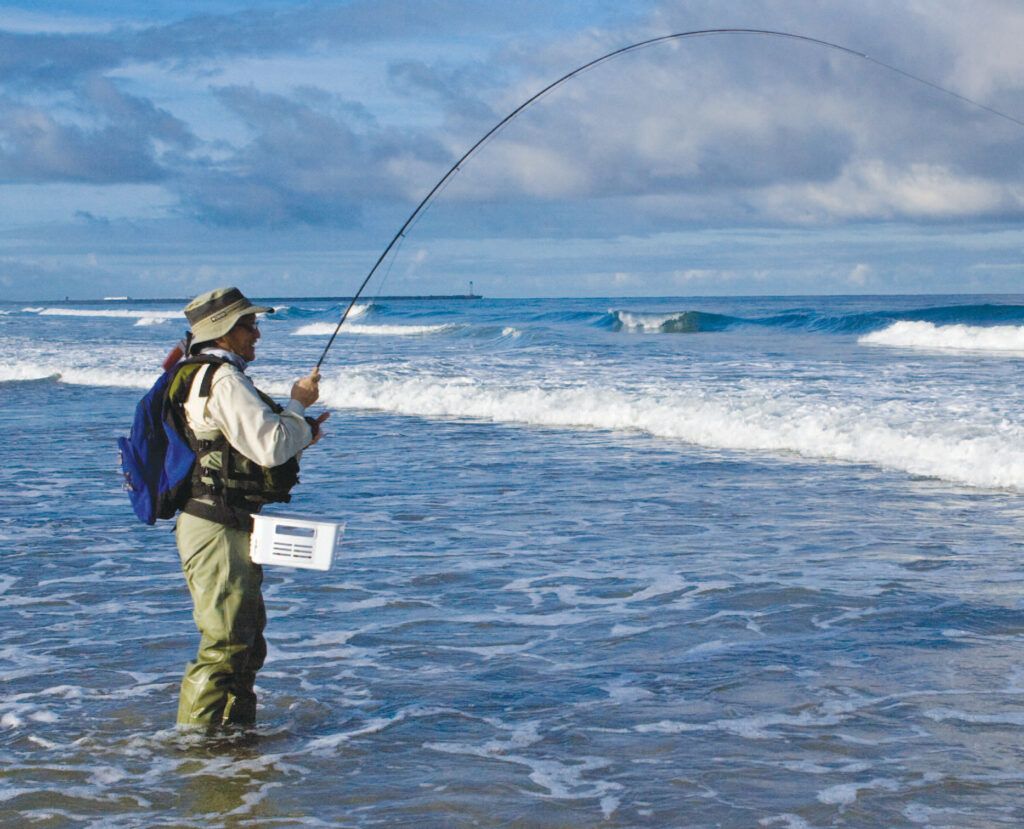
As a general rule, I wade about knee deep, limiting my depth partly for safety concerns, but mostly because the perch are close to shore. There’s no need to make 80-foot casts. Casts of 30 to 50 feet are plenty far enough to hook fish. From knee-deep water, wait for the next wave to break and for the wall of white water to pass. Cast into the foamy, slower water behind the break. I refer to this as “fishing the foam.” After you’ve cast, pause a moment to allow the sinking line to take the fly near the bottom. Begin your retrieve by animating the fly with a couple of quick strips of line, followed by a short pause. Repeat the process until you get bit.
The timing of the cast is extremely important. Cast too soon, and the wall of white water will engulf your fly line and push it toward the beach, making your retrieve impossible. Cast too late, and the receding water will cause the fly to drag against the current, creating an unnatural presentation. Keep your rod tip low, near the surface of the water during the retrieve, and keep a tight line to detect even subtle takes. Remember: Fish the foam.
The San Diego coast stretches from Oceanside all the way down to the Mexican border. There are numerous sandy beaches to explore throughout the county. Some of my favorite venues include Imperial Beach north of the pier, Coronado’s Silver Strand, Pacific Beach, Torrey Pines, Del Mar, and Oceanside near the pier. Think of fly fishing from the beach as similar to stripping Woolly Buggers for trout in your favorite lake. Just add some hydraulics to the water, some wind in your face, a little salt spray in your eyes, and a few bikinis passing by. It’s awesome!



